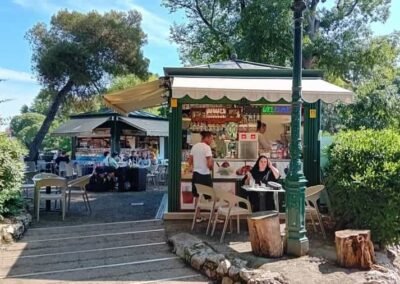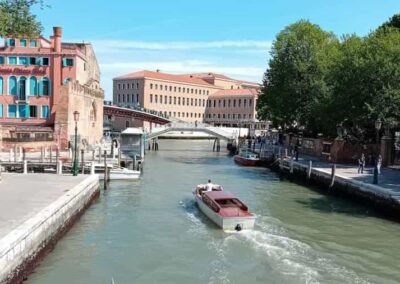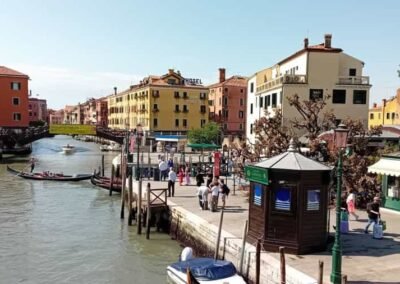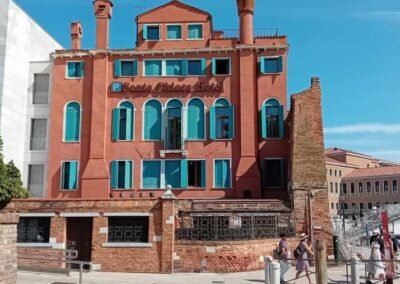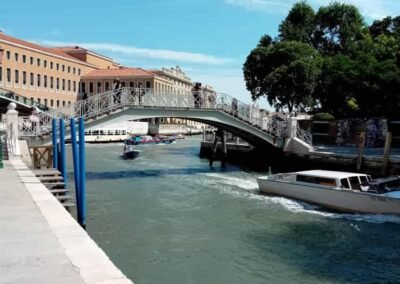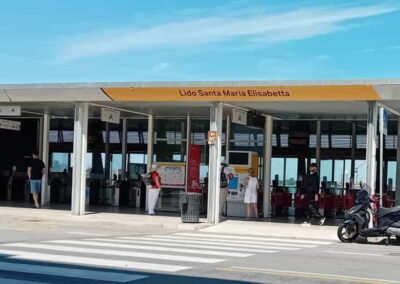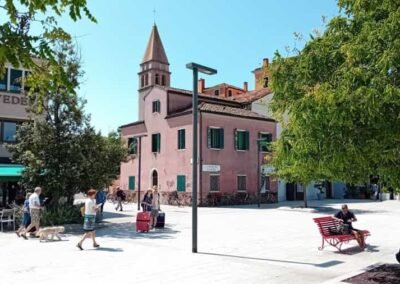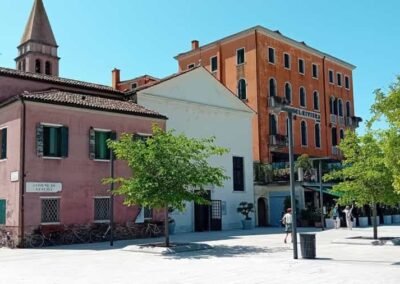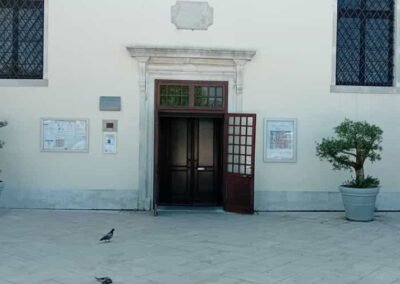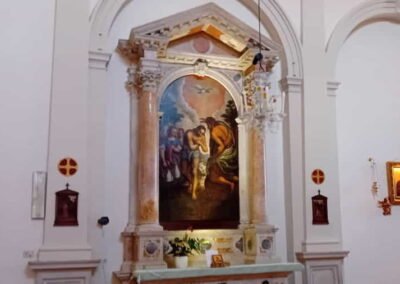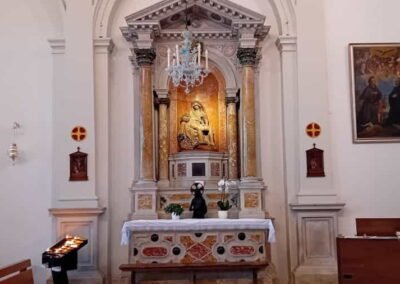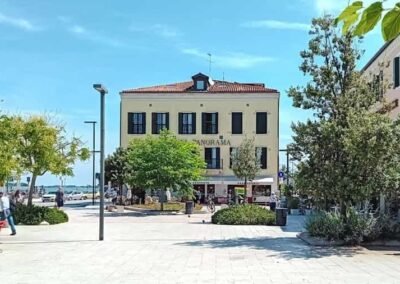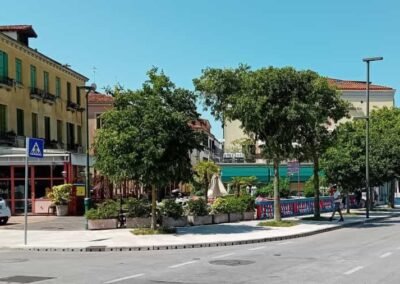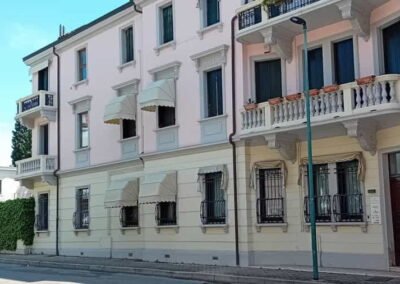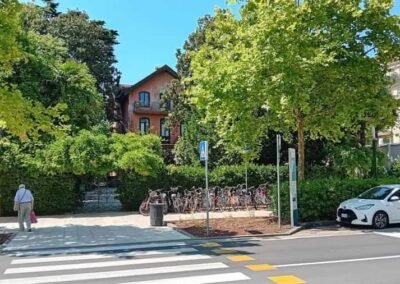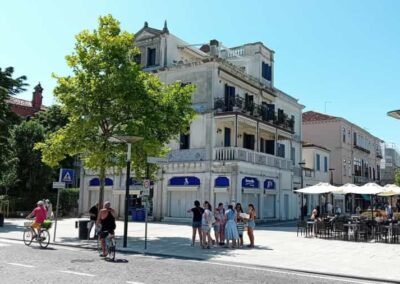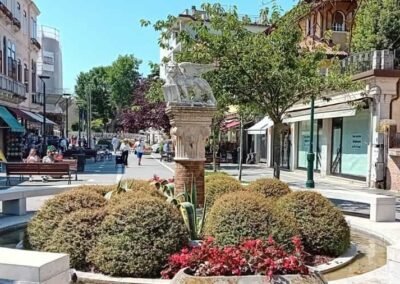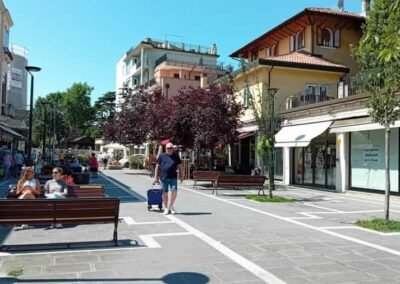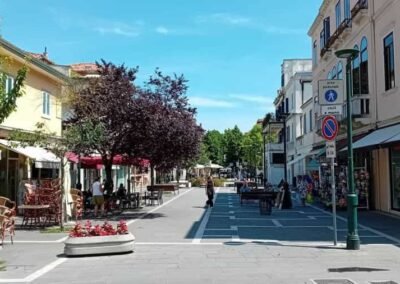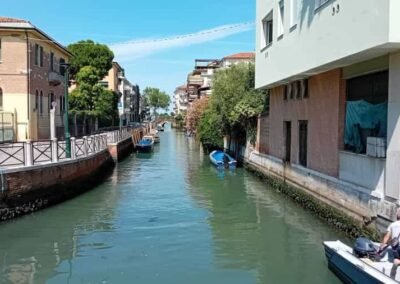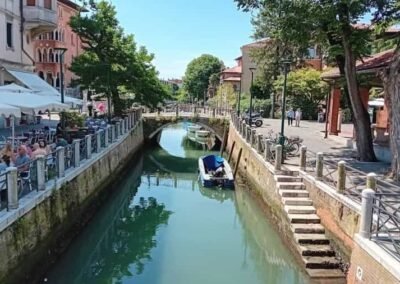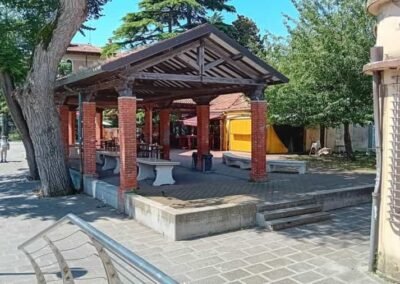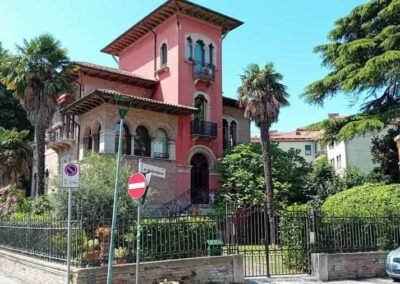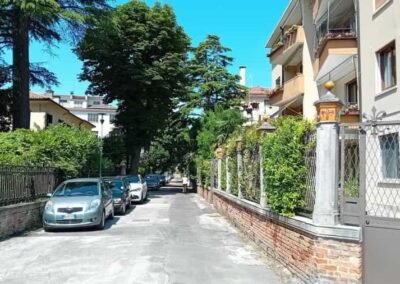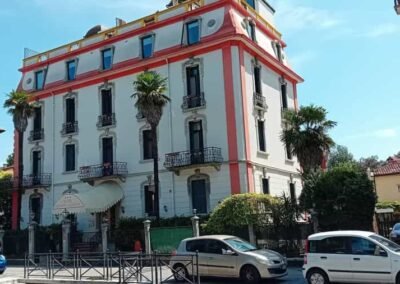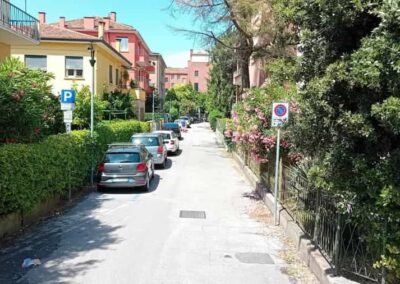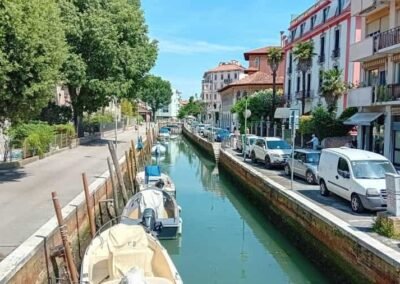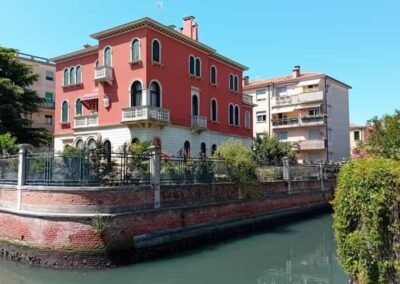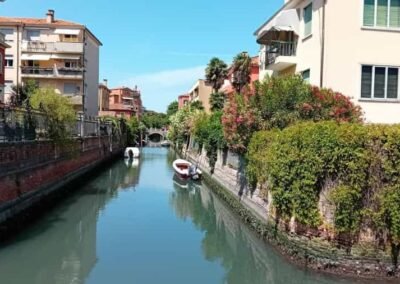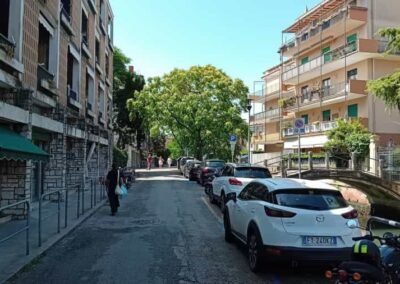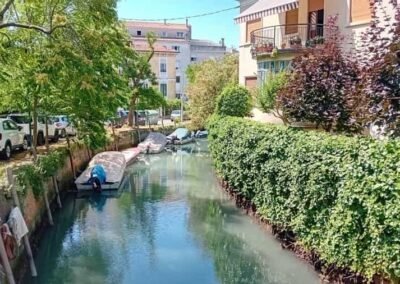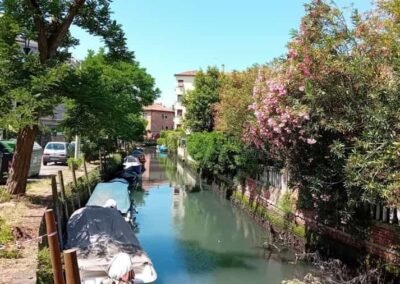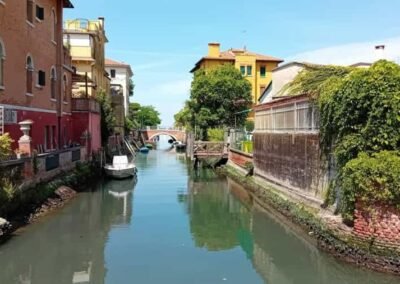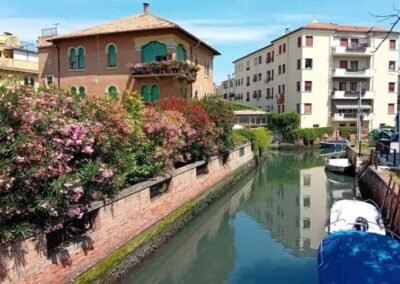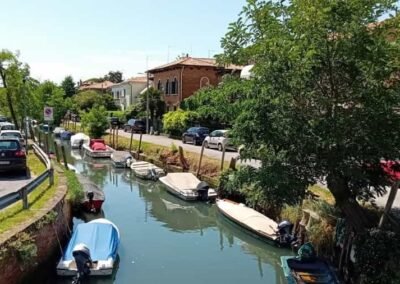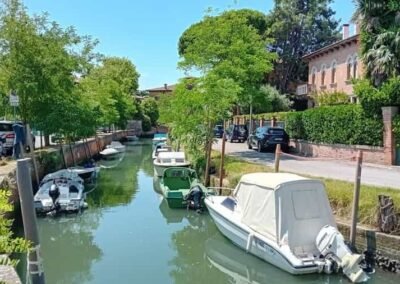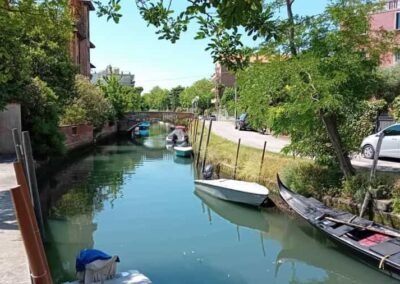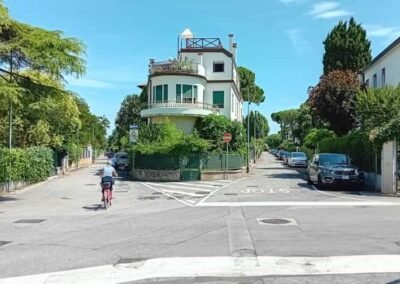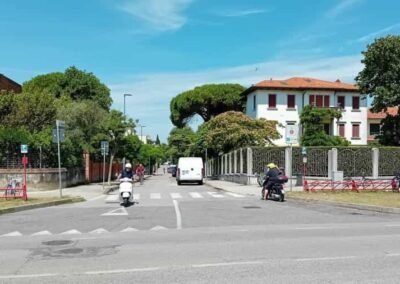HOME
THE REGIONS OF ITALY
PLACES IN ITALY
Italy in Photos
[language-switcher]
Via Lepanto, 30100 Lido, Metropolitan City of Venice, Italy (June 2025)
Lido of Venice
The Lido of Venice, or “Lido di Venezia”, is a slender, elongated island that stretches for about 11 kilometres (7 miles) between the Venetian Lagoon and the Adriatic Sea. Known for its tranquil beaches, historic charm, and unique place in Venetian culture, the Lido serves as a serene contrast to the bustling streets and canals of Venice’s historic centre. Often described as Venice’s “beachfront,” the Lido has long been a haven for both Venetians and international travellers seeking relaxation, elegance, and a touch of glamour.
What sets the Lido apart from other parts of Venice is its distinct combination of natural beauty and cosmopolitan atmosphere. Unlike Venice proper, where cars are absent and canals dominate transportation, the Lido is one of the few areas in the Venetian Lagoon where vehicles are permitted. This accessibility, combined with its long sandy beaches and tree-lined boulevards, gives the island a relaxed, almost resort-like feel that has appealed to visitors since the 19th century. Grand hotels such as the Hotel Excelsior and Hotel des Bains—once playgrounds for European royalty, artists, and celebrities, are testaments to the Lido’s Belle Époque heyday.
Beyond its role as a seaside resort, the Lido holds a significant place in the cultural and cinematic world as the host of the Venice International Film Festival. Founded in 1932, the festival is the oldest of its kind and is held annually at the Palazzo del Cinema. This prestigious event draws filmmakers, actors, and critics from around the globe, adding a dose of red-carpet glamour to the island’s otherwise laid-back ambiance. During the festival, the Lido becomes a global focal point of cinema and creativity, further solidifying its place on the world stage.
The island is also notable for its historical and architectural heritage. It is home to elegant Liberty-style villas, leafy parks, and religious landmarks, including the ancient Church of San Nicolò, which houses the remains of Saint Nicholas, the patron saint of sailors. The Lido has long played a strategic role in Venice’s maritime defence, and its location at the lagoon’s opening has historically made it a key site in protecting the city from invasions and storms.
Today, the Lido offers a more understated, authentic slice of Venetian life. Its residential neighbourhoods, charming cafes, and bicycle-friendly streets make it a peaceful retreat for those looking to experience Venice without the crowds. Whether you are sunbathing on the beach, cycling along the Murazzi sea walls, or sipping an espresso while watching the boats in the lagoon, the Lido provides a gentle, sophisticated escape just a short vaporetto ride from St. Mark’s Square.In essence, the Lido of Venice is more than just a beach—it is a cultural crossroad, a historical site, and a modern sanctuary. It embodies a fusion of sea and city, leisure and history, and continues to enchant those who seek both the vibrancy of Venice and the serenity of the sea.
Worth a Visit
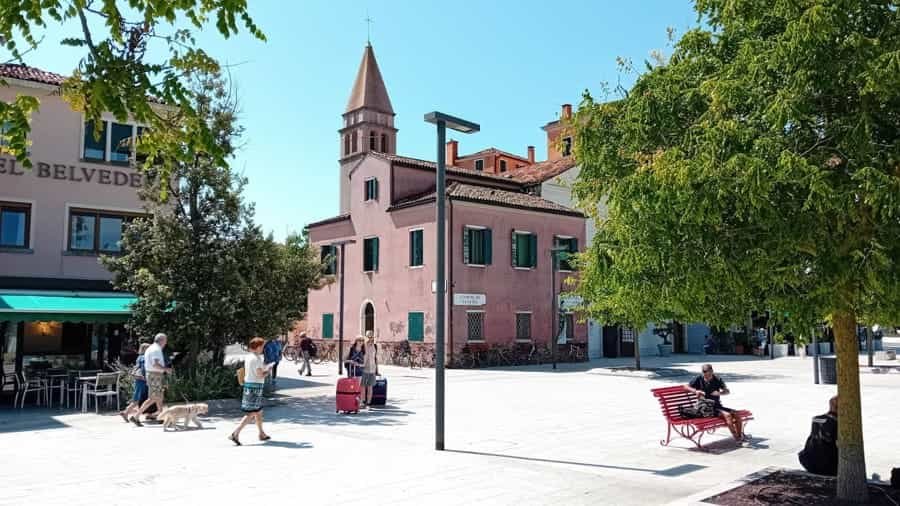
Riviera Santa Maria Elisabetta, located at the heart of the Lido of Venice, serves as the island’s principal gateway and a vibrant hub that seamlessly blends historical charm with modern convenience. Stretching from the Lido’s main vaporetto (waterbus) terminal inland toward the beaches and residential quarters, this tree-lined boulevard is more than just a transit point, it is the welcoming face of the Lido and the starting point for countless Venetian journeys. Often referred to simply as “Santa Maria Elisabetta” or “S.M.E.,” the area derives its name from the nearby Church of Santa Maria Elisabetta, a small but historically significant religious structure that once marked the entrance to the island.
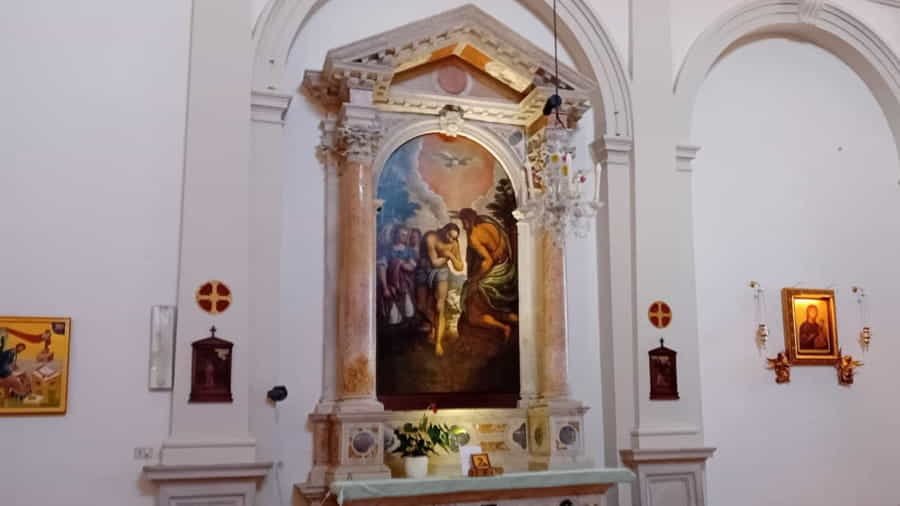
The Chiesa Patronato di Santa Maria Elisabetta, located in the central area of the Lido of Venice, is a modest yet historically meaningful church that serves as a spiritual and cultural anchor for the local community. Situated near the Riviera Santa Maria Elisabetta, the church is often one of the first landmarks seen by visitors arriving on the island, marking the transition from the bustling vaporetto terminal to the calmer, more residential parts of the Lido. This church, dedicated to Saint Mary Elizabeth, has long held a place of quiet importance in the daily life of Lido’s residents. Unlike the grand basilicas of central Venice, the Patronato di Santa Maria Elisabetta is characterized by its simplicity, warmth, and sense of belonging
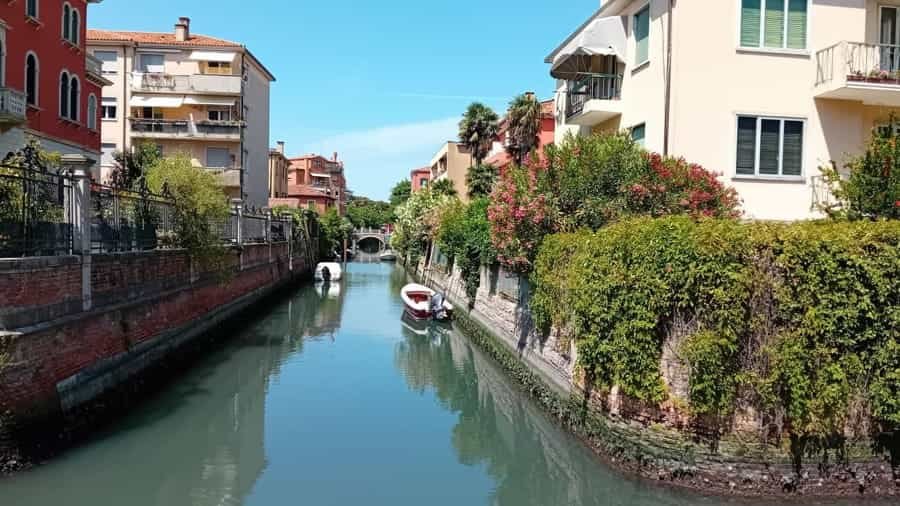
Via Lepanto, located in the heart of the Lido of Venice, is one of the island’s most notable streets, connecting the lively Riviera Santa Maria Elisabetta area with the quieter residential zones and stretches toward the Adriatic beaches. Known for its tree-lined charm and balance of activity and tranquillity, Via Lepanto serves as both a vital artery of daily life and a reflection of the Lido’s distinctive character. The street takes its name from the historic Battle of Lepanto (1571), a significant naval encounter in which the Venetian fleet played a major role.
Photo Gallery of Walk 1 – Via della Libertà to Via Alessandro Bettoni
Approximately 1.16 km – 0.72 miles
Walk starts in Via della Libertà – Via Trento – Via Cesare Battisti – Piazza Nazario Sauro – Vicolo Porto – Chiesa San Martiri,Piazza SS Martrtiri – Via Trieste – Via Pio Battocletti – Vicolo Porto – Piazza Nazario Sauro – Via Cesare Battisti – Via Alessandro Bettoni – Lungolago – Marina di Bogliaco, Via Alessandro Bettoni
COPYRIGHT © 2018-2025 ITALY IN PHOTOS - ALL RIGHTS RESERVED
